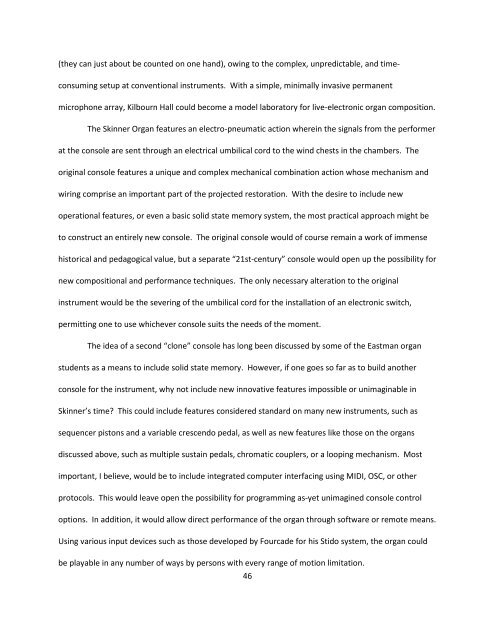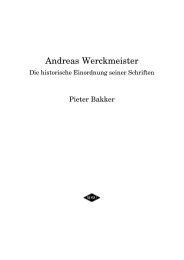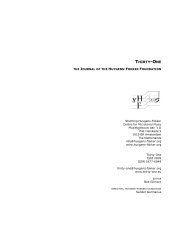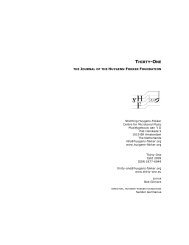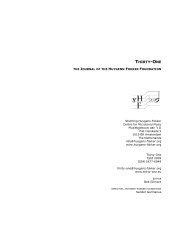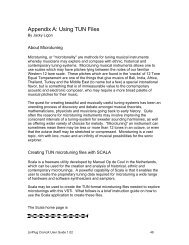Recent Organ Design Innovations and the 21st-century - Stichting ...
Recent Organ Design Innovations and the 21st-century - Stichting ...
Recent Organ Design Innovations and the 21st-century - Stichting ...
Create successful ePaper yourself
Turn your PDF publications into a flip-book with our unique Google optimized e-Paper software.
(<strong>the</strong>y can just about be counted on one h<strong>and</strong>), owing to <strong>the</strong> complex, unpredictable, <strong>and</strong> time-<br />
consuming setup at conventional instruments. With a simple, minimally invasive permanent<br />
microphone array, Kilbourn Hall could become a model laboratory for live-electronic organ composition.<br />
The Skinner <strong>Organ</strong> features an electro-pneumatic action wherein <strong>the</strong> signals from <strong>the</strong> performer<br />
at <strong>the</strong> console are sent through an electrical umbilical cord to <strong>the</strong> wind chests in <strong>the</strong> chambers. The<br />
original console features a unique <strong>and</strong> complex mechanical combination action whose mechanism <strong>and</strong><br />
wiring comprise an important part of <strong>the</strong> projected restoration. With <strong>the</strong> desire to include new<br />
operational features, or even a basic solid state memory system, <strong>the</strong> most practical approach might be<br />
to construct an entirely new console. The original console would of course remain a work of immense<br />
historical <strong>and</strong> pedagogical value, but a separate “<strong>21st</strong>-<strong>century</strong>” console would open up <strong>the</strong> possibility for<br />
new compositional <strong>and</strong> performance techniques. The only necessary alteration to <strong>the</strong> original<br />
instrument would be <strong>the</strong> severing of <strong>the</strong> umbilical cord for <strong>the</strong> installation of an electronic switch,<br />
permitting one to use whichever console suits <strong>the</strong> needs of <strong>the</strong> moment.<br />
The idea of a second “clone” console has long been discussed by some of <strong>the</strong> Eastman organ<br />
students as a means to include solid state memory. However, if one goes so far as to build ano<strong>the</strong>r<br />
console for <strong>the</strong> instrument, why not include new innovative features impossible or unimaginable in<br />
Skinner’s time? This could include features considered st<strong>and</strong>ard on many new instruments, such as<br />
sequencer pistons <strong>and</strong> a variable crescendo pedal, as well as new features like those on <strong>the</strong> organs<br />
discussed above, such as multiple sustain pedals, chromatic couplers, or a looping mechanism. Most<br />
important, I believe, would be to include integrated computer interfacing using MIDI, OSC, or o<strong>the</strong>r<br />
protocols. This would leave open <strong>the</strong> possibility for programming as-yet unimagined console control<br />
options. In addition, it would allow direct performance of <strong>the</strong> organ through software or remote means.<br />
Using various input devices such as those developed by Fourcade for his Stido system, <strong>the</strong> organ could<br />
be playable in any number of ways by persons with every range of motion limitation.<br />
46


